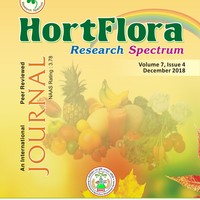Papers by Nathalie Dubois

Toxicologie Analytique et Clinique, 2015
Sleep Slow Oscillations (SSOs), paradigmatic EEG markers of cortical bistability (alternation bet... more Sleep Slow Oscillations (SSOs), paradigmatic EEG markers of cortical bistability (alternation between cellular downstates and upstates), and sleep spindles, paradigmatic EEG markers of thalamic rhythm, are two hallmarks of sleeping brain. Selective thalamic lesions are reportedly associated to reductions of spindle activity and its spectrum ~14 Hz (sigma), and to alterations of SSO features. This apparent, parallel behavior suggests that thalamo-cortical entrainment favors cortical bistability. Here we investigate temporally-causal associations between thalamic sigma activity and shape, topology, and dynamics of SSOs. We recorded sleep EEG and studied whether spatio-temporal variability of SSO amplitude, negative slope (synchronization in downstate falling) and detection rate are driven by cortical-sigma-activity expression (12-18 Hz), in 3 consecutive 1 s-EEG-epochs preceding each SSO event (Baselines). We analyzed: (i) spatial variability, comparing maps of baseline sigma power and of SSO features, averaged over the first sleep cycle; (ii) event-by-event shape variability, computing for each electrode correlations between baseline sigma power and amplitude/slope of related SSOs; (iii) eventby-event spreading variability, comparing baseline sigma power in electrodes showing an SSO event with the homologous ones, spared by the event. The scalp distribution of baseline sigma power mirrored those of SSO amplitude and slope; event-by-event variability in baseline sigma power was associated with that in SSO amplitude in fronto-central areas; within each SSO event, electrodes involved in cortical bistability presented higher baseline sigma activity than those free of SSO. In conclusion, spatio-temporal variability of thalamocortical entrainment, measured by background sigma activity, is a reliable estimate of the cortical proneness to bistability.

Journal of Chromatography B, 2009
GC is commonly used for the analysis of cannabis samples, e.g. in forensic chemistry. However, as... more GC is commonly used for the analysis of cannabis samples, e.g. in forensic chemistry. However, as this method is based on heating of the sample, acidic forms of cannabinoids are decarboxylated into their neutral counterparts. Conversely, HPLC permits the determination of the original composition of plant cannabinoids by direct analysis. Several HPLC methods have been described in the literature, but most of them failed to separate efficiently all the cannabinoids or were not validated according to general guidelines. By use of an innovative methodology for modelling chromatographic responses, a simple and accurate HPLC/DAD method was developed for the quantification of major neutral and acidic cannabinoids present in cannabis plant material: 9-tetrahydrocannabinol (THC), THC acid (THCA), cannabidiol (CBD), CBD acid (CBDA), cannabigerol (CBG), CBG acid (CBGA) and cannabinol (CBN). 8-Tetrahydrocannabinol ( 8-THC) was determined qualitatively. Following the practice of design of experiments, predictive multilinear models were developed and used in order to find optimal chromatographic analytical conditions. The method was validated following an approach using accuracy profiles based on -expectation tolerance intervals for the total error measurement, and assessing the measurements uncertainty. This analytical method can be used for diverse applications, e.g. plant phenotype determination, evaluation of psychoactive potency and control of material quality.

Journal of Chromatography B, 2014
Endocrine disrupting chemicals are substances that can interact with the endocrine system causing... more Endocrine disrupting chemicals are substances that can interact with the endocrine system causing alteration of the endocrine homeostasis and potentially lead to adverse health effects. They have been linked to numbers endocrine diseases such as reproductive disorders, infertility, hormonedependant cancers, obesity, diabetes, neuro-developmental disorders,… Phthalates, Parabens and Benzophenone-3 (BP3) have endocrine disrupting properties and they are high production volume (HPV) chemicals. More than 75% of general population's urines were found positive for most of them leading to an important public health issue These compounds are rapidly excreted from human body, their analysis in urine provides information about recent exposure. To assess human exposure and investigate potential endocrine disruptive health injuries, we developed an Ultra High Pressure Liquid Chromatography coupled to Tandem Mass Spectrometry analytical method for simultaneous measurement of phthalate metabolites, parabens and BP3 in human urine. Total error method approach E-noval software (Arlenda) • Calibration points in duplicate during 3 days : from 0.5 to 200 µg/L (most compounds) from 2 to 800 µg/L (MP, BP3) • Validation points in triplicate during 3 days : from 0.2 to 200 µg/L (most compounds) from 0.2 to 800 µg/L (MP, BP3) The acceptance limits were set at 30% for concentration upper of 2 µg/L for EP,
Environmental Pollution, 2009
The publisher regrets that in the above article Table was printed incorrectly. It is now reproduc... more The publisher regrets that in the above article Table was printed incorrectly. It is now reproduced correctly, below. Results for surface water samples (BE ¼ benzoylecgonine, COC ¼ cocaine, COC eq ¼ cocaine equivalents, nm ¼ not measured). The COC eq were calculated based on the following formula: COC eq ¼ 2.33 Â loads BE as proposed by Zuccato et al. (2005).
Environment International, 2012
projects are funded under the 7 th framework programme and the LIFE + funding instrument of the E... more projects are funded under the 7 th framework programme and the LIFE + funding instrument of the European Commission. This poster does not constitute a formal communication and does not necessarily the official position of the European Commission or Member States. Nothing in this poster creates a binding provision. In case this poster is in conflict with the terms of the EC-GA, the terms of the latter shall prevail. A, A, Triclosan Triclosan and and 4 4--Nonylphenol in a Nonylphenol in a general general Belgian Belgian population population

Addiction, 2009
ABSTRACTAims Cocaine is the second most‐used illicit drug world‐wide and its consumption is incr... more ABSTRACTAims Cocaine is the second most‐used illicit drug world‐wide and its consumption is increasing significantly, especially in western Europe. Until now, the annual prevalence has been estimated indirectly by means of interviews. A recently introduced and direct nation‐wide approach based on measurements of the major urinary excreted metabolite of cocaine, benzoylecgonine, in wastewater is proposed.Design Wastewater samples from 41 wastewater treatment plants (WWTPs) in Belgium, covering approximately 3 700 000 residents, were collected. Each WWTP was sampled on Wednesdays and Sundays during two sampling campaigns in 2007–08. Samples were analysed for cocaine (COC) and its metabolites, benzoylecgonine (BE) and ecgonine methylester (EME) by a validated procedure based on liquid chromatography coupled with tandem mass spectrometry. Concentrations of BE were used to calculate cocaine consumption (g/day per 1000 inhabitants) for each WWTP region and for both sampling campaigns (g...

Journal of Analytical Toxicology, 2012
In Belgium, driving under the influence (DUI) of cannabis is prohibited and has severe legal cons... more In Belgium, driving under the influence (DUI) of cannabis is prohibited and has severe legal consequences for the driver if the blood plasma concentration of D 9 -tetrahydrocannabinol (THC) exceeds 1 mg/L. A method to quantify low concentrations of THC and its hydroxylated (THC-OH) and carboxylated (THC-COOH) metabolites in plasma was developed for DUI but also for other applications. Ultrahigh-performance liquid chromatography coupled to mass spectrometry seems to be a very convenient method to combine fast chromatographic separation and good sensitivity. The method was validated according to total error approach. Chromatographic separation was achieved in a 3-min total run time. The limits of quantitation were lower or equal to 1 mg/L for all compounds. The linearity of the method was acceptable in the validated range of concentrations (from 0.5 to 50 mg/L for THC, from 0.9 to 50 mg/L for THC-OH and from 1.1 to 100 mg/L for THC-COOH). The biases were lower than 13%, and the relative standard deviations for repeatability and intermediate precision did not exceed 15%. Lower and upper b-expectation tolerance limits did not exceed the acceptance limits of 20% for concentrations higher than 2 mg/L for THC and THC-OH and higher than 4 mg/L for THC-COOH. The acceptance limits were 30% for THC and THC-OH concentrations lower than 2 mg/L and for THC-COOH concentrations lower than 4 mg/L.
Annales de biologie clinique
The identification of a product absorbed by an opiate consumer is sometimes problematic since the... more The identification of a product absorbed by an opiate consumer is sometimes problematic since there is no specific biomarker for all molecules. We developed an ultra-high pressure liquid chromatography coupled to tandem mass spectrometry technique which allows the identification and the quantification of 25 opiates in plasma. The sample preparation consists in a solid-phase extraction on Oasis MCX cartridges (Waters). The method has been validated according to FDA criteria completely for 21 substances and with some reservations for the remaining 4 analytes. This method has been applied to 80 patients treated at the University Hospital of Liege for whom the screening of opiates was positive. The identification of the product consumed was effective in 86% of cases.










Uploads
Papers by Nathalie Dubois